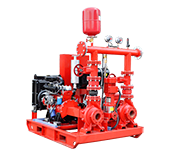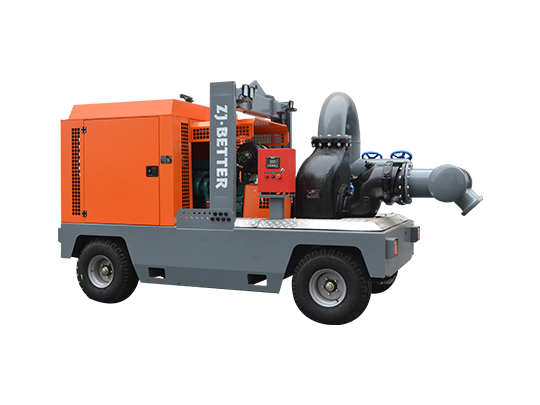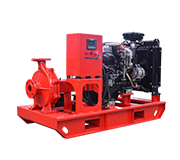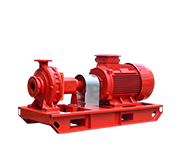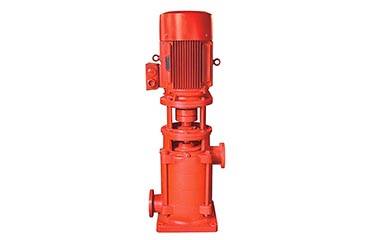How do you test a electric fire pump? & electric fire pump startup
2021-02-18
Electric Fire Pump Startup
1.Check all equipments if there is no damage during shipping and receiving.
2.Installation all the pumps and controllers according to your situation
3. Confirm If there is a disconnect switch ahead of the fire pump controller, is sized.
4. Wiring between the motor and the controller is based on operating voltage of the equipment. Motor nameplate will provide connections if controller being used is across the line. All penetrations into the controller must be made at the bottom or side of the controller. Do not penetrate the top. Wiring must be completed before starting. Do not allow anyone to power on the device until our arrivals.
6. For installations where a transfer switch has been provided, check that the generator start circuit has been connected to the contact provided in the emergency side of the fire pump controller. if the second source of power is a second utility, the start circuit is omitted. Verify that you need to start the generator before you plan to start the fire pump because you need to perform a generator fire test.
7. Verify that the reliable water source being connected to the pumps has been properly flushed prior to doing so.
8. NFPA20 standards Suction piping based on the type of pump being installed. (Including but not limited to, potential of straight run prior to entering the pump, eccentric reducer flat side up, OS&Y valves only on suction, etc)
9. Verify that the suction and discharge pipe sizes meet the requirements of NFPA20 based on the gpm of the pump being installed. If required pipe sizes differ from pump flange sizes, an eccentric reducer must be used on the suction and a concentric increaser must be used on the discharge.
10. Confirm that all piping and accessories are rated for the amount of pressure expected during pump churn (zero flow).
11. Verify that the entire pump assembly base is level, has been securely anchored, and that the base is grouted sufficiently with non-shrinkable grout.
12. Confirm that the jockey pump suction line is piped ahead of the fire pump main OS&Y. Confirm that the discharge of the jockey pump is piped downstream of the main discharge valve of the fire pump.
13. Install all pump accessories and drains. This includes air release valve, casing relief valve, packing drip drains and valves with gauges. Casing relief valve must be installed between the fire pump discharge flange and the main discharge check valve. This must be piped to a floor drain separate from packing drip drains. Depending upon the type of jockey pump being used, a relief valve may or may not need to be installed on the discharge piping between the pump and discharge check valve.
14. Controller sensing lines are piped totally independent of each other per NFPA20 and are located on the discharge piping of the pump it is running between the discharge check valve and main discharge control valve. Proper material must be used and two drilled (1 /32”) check valves must be installed on each line no less than 5 feet apart.
15. Test tee for header is installed after main discharge check and prior to main discharge control valve. Hose valve header to be sized per NFPA20 and must have a main control valve installed.
When testing electric fire pumps, you should perform these weekly. Electric Fire Pump Testing Procedure
1.Contact the alarm company and have the system put on test.
2.Close the main control valve to the system.
3.Perform manual start of the fire pump by pressing the start button on the fire pump controller.
4.Verify there is sufficient flow from the 3/4” casing relief valve on the fire pump.
5.Verify there the fire pump packing gland is properly adjusted.
6.Record the fire pumps suction and discharge pressures, as well as the volt and amp readings on the fire pump controller.
7.After 10 minutes push the stop button on the fire pump controller.
8.Perform an automatic start of the fire pump by relieving pressure from the fire pump sensing line. Verify cooling water. After 10 minutes the controller will shut itself off.
9.Open the main control valve to the system.
10.Contact the alarm company and have the system placed back in service.
Do not operate any equipment unless you’re properly trained and qualified. Always wear protective equipments, and follow the latest procedures set forth in local and national codes like the NFPA 25.

